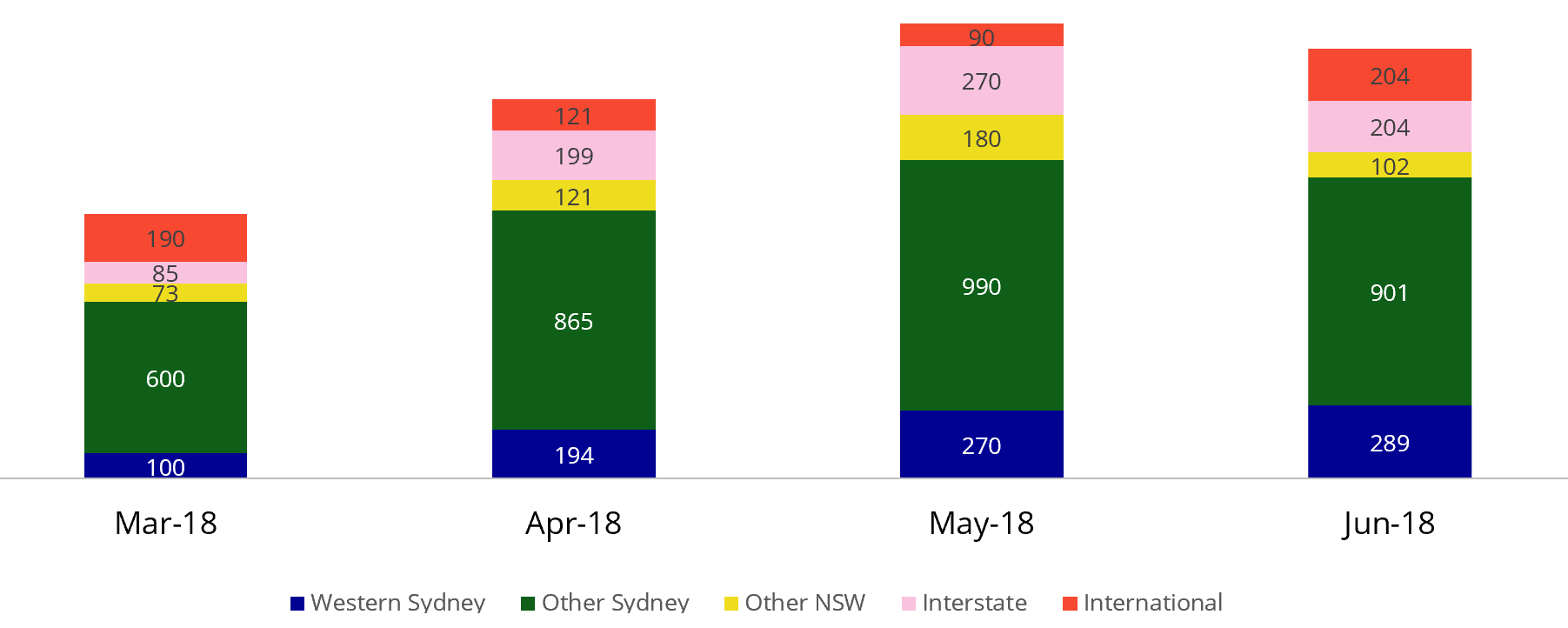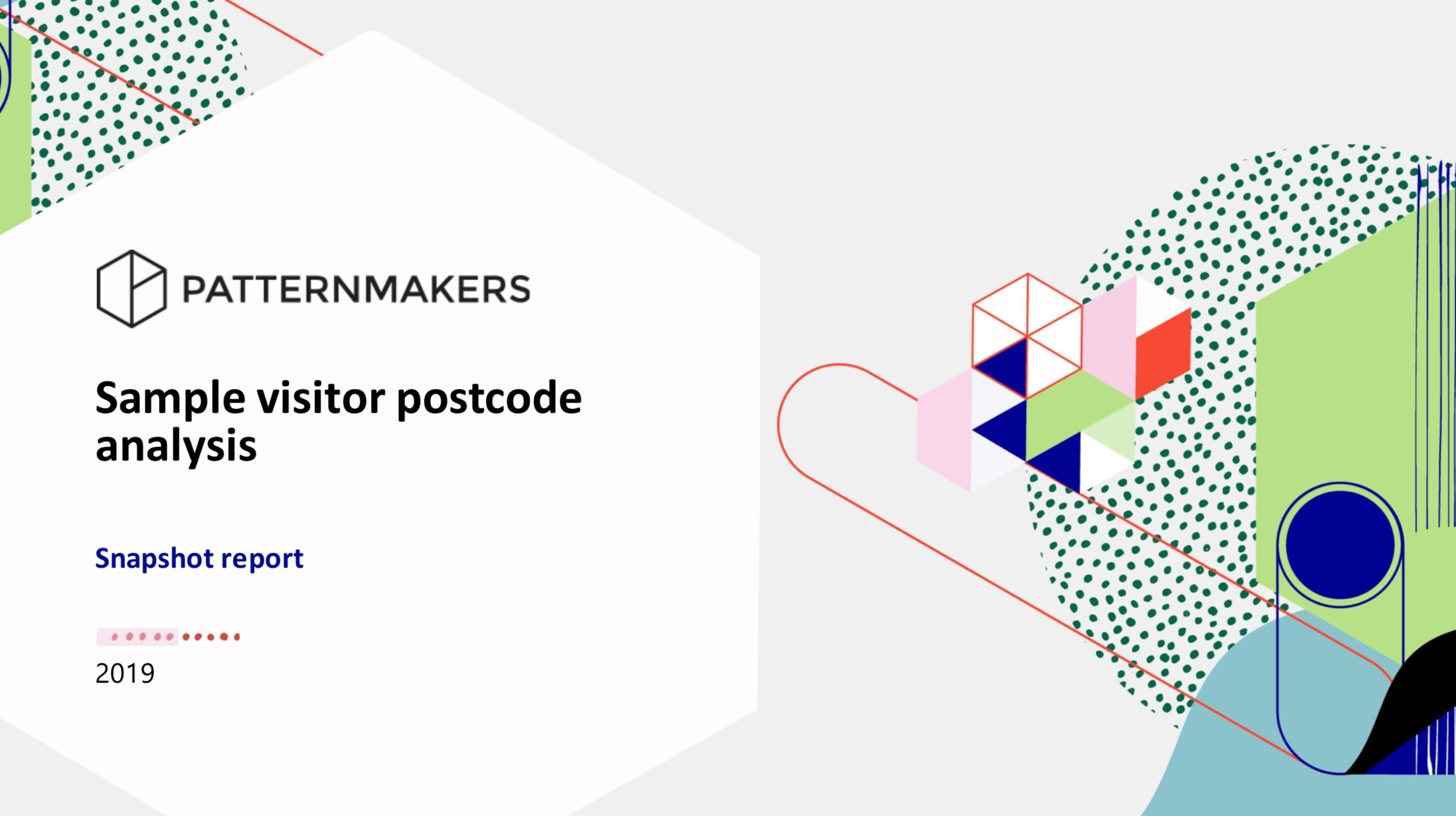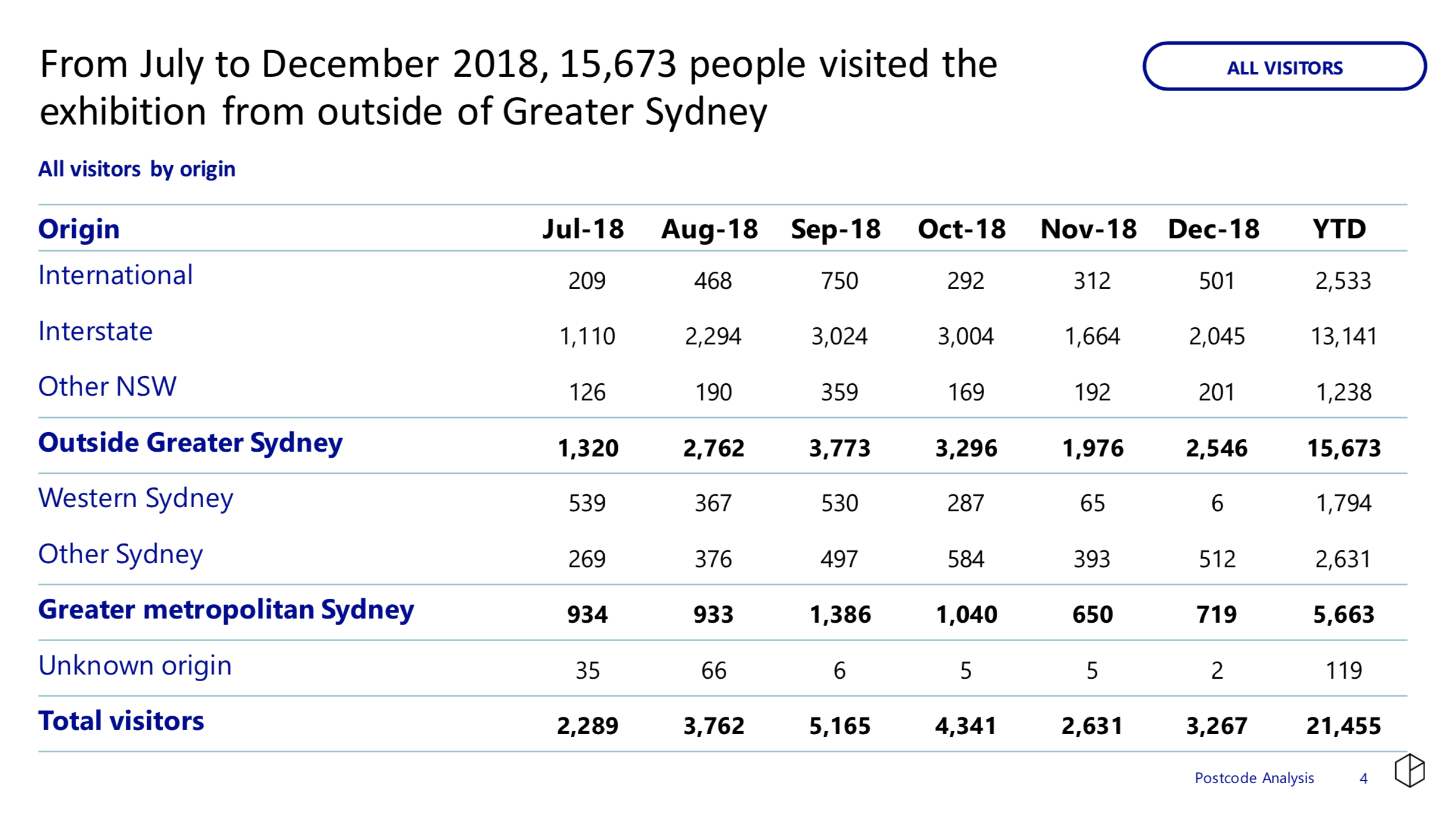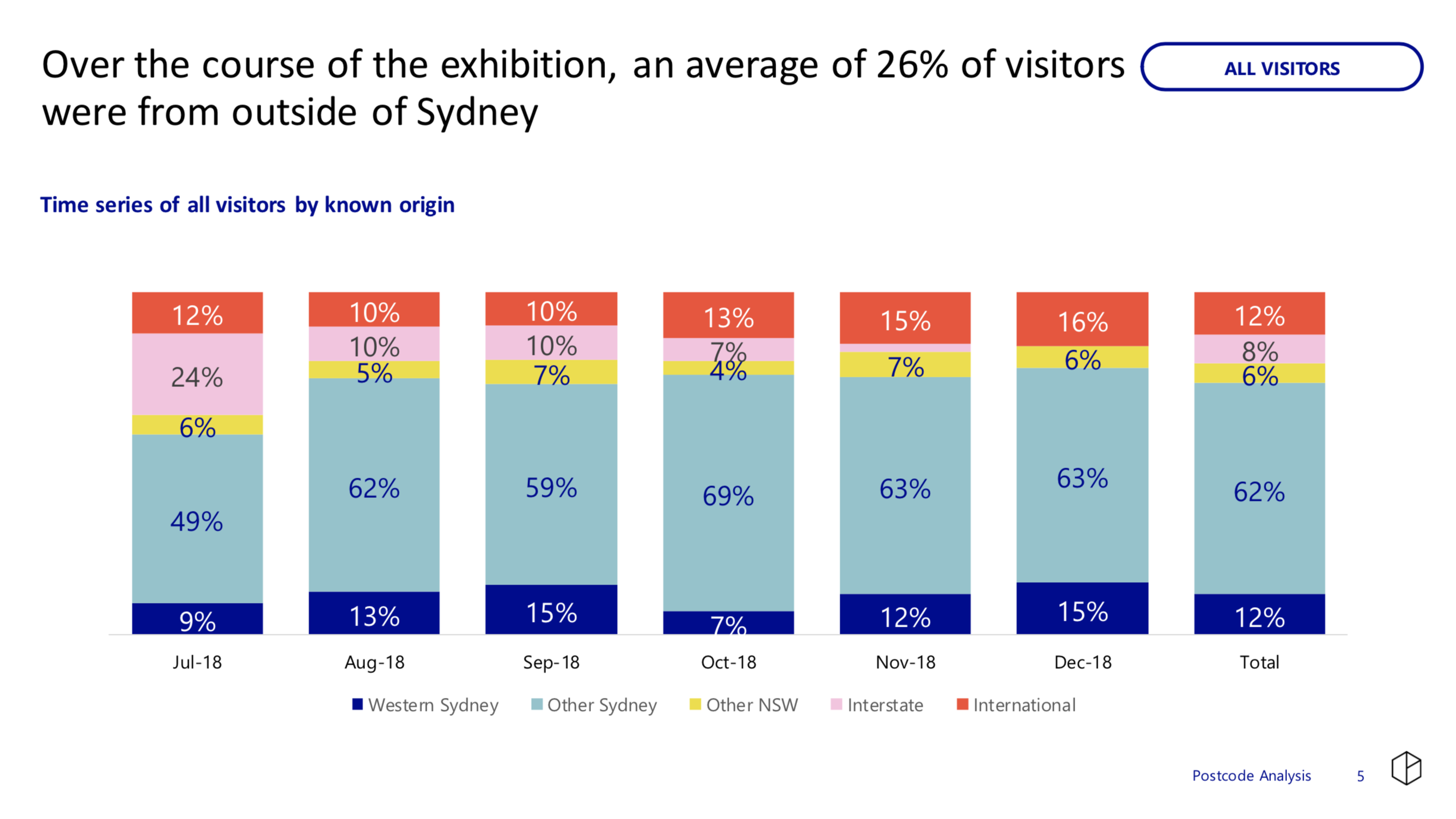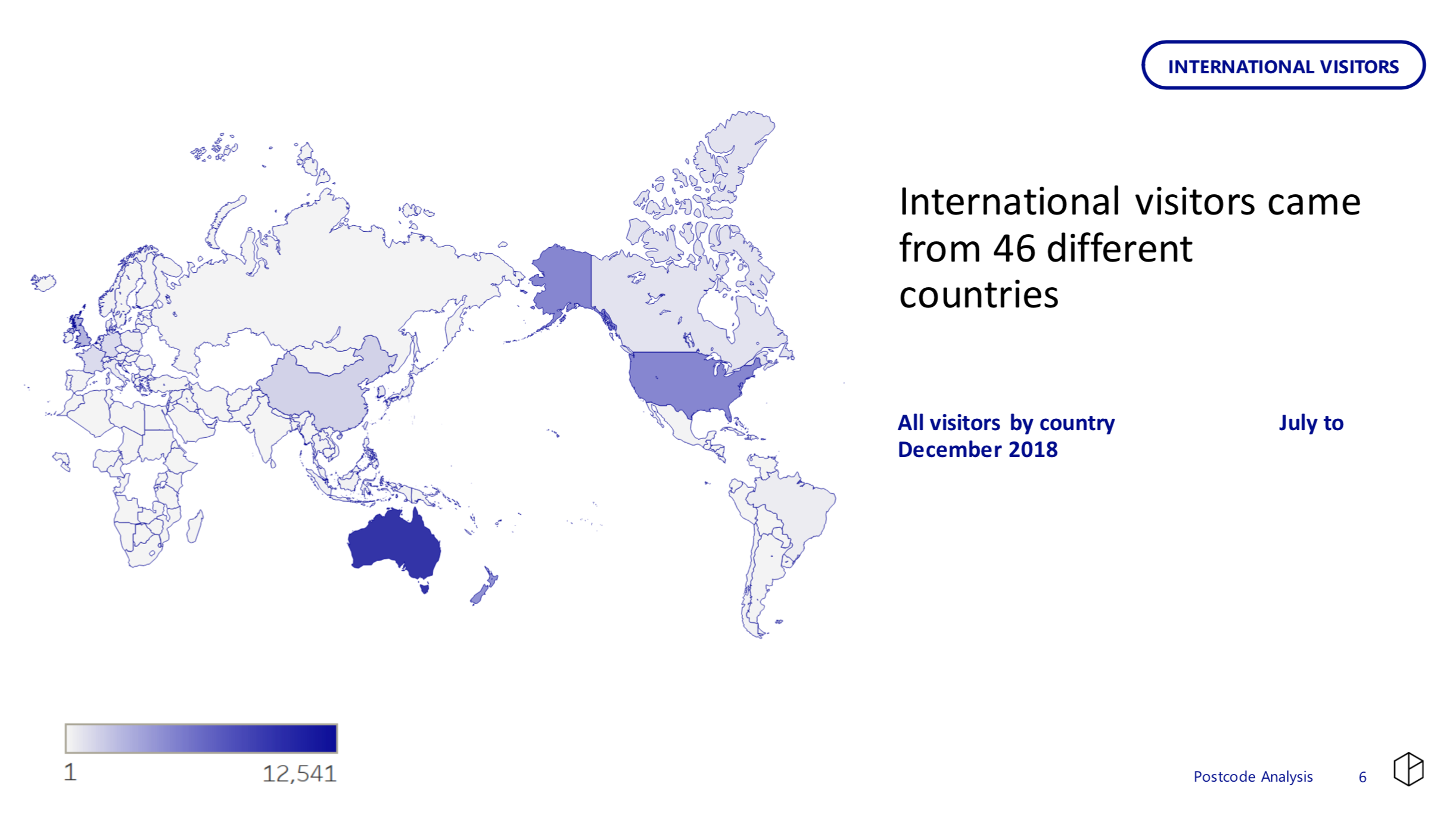So, you collect postcodes. Now what?
Converting postcode data into meaningful insight can be complex, due to differing boundaries of postcodes, suburbs, Local Government Areas (LGAs), regions and States/Territories. For instance, one postcode can sit across two, three or more LGAs.
Many organisations collect postcodes from attendees and participants. But turning it into useful insight is not straightforward!
Knowing how many people came from postcode ‘2150’ is not as useful as knowing how many people came from the City of Parramatta Local Government Area, or the Western Sydney region.
But converting postcode data into meaningful insight is tricky, due to differing boundaries of postcodes, suburbs, Local Government Areas (LGAs), regions and States/Territories. For instance, one postcode can sit across two, three or more LGAs.
In this post, we share how you can map your postcode data to LGAs, to access more useful insights. We also share how we can help!
Using the ABS correspondences files
This is where the fun begins! If you’re handy with excel, and have a few days up your sleeve, you can set up your own mapping process in-house.
You can map postcodes to other geographic areas using the ABS correspondences files. These are a set of spreadsheets that list the corresponding LGA for every postcode in Australia. You can also access correspondence files for other geographic categories, like Statistical Areas 1-4.
Remember that the geographic boundaries do change from time to time, so be sure to make sure you have the latest files from the ABS (just give them a call if you’re not sure).
Steps in postcode mapping
Once you’ve located the right correspondences file, follow these steps to turn your postcodes into other geographic categories:
Clean your datafile so you have a list of attendances for each postcode (and check your file for erroneous codes and empty fields)
Download the ABS correspondences file, and insert a new column to the right of each postcode & corresponding LGA.
Use a VLOOKUP formula to add the attendances for each postcode into your correspondences worksheet
Multiply the number of attendances to the % of each postcode in each LGA
In a new sheet, sum the total number of attendances for each LGA (hint: the SUMIF formula can help with this)
Lastly, you can tabulate the total attendances by region (e.g. Western Sydney, West Melbourne) and by State/Territory.
Patternmakers Postcode Analysis package
For those short on time, fear not, we are here to help!
Our Postcode Analysis package delivers meaningful audience and visitor insights by converting postcode data to the regions most important to you and visualising that data using tables, charts and ‘choropleths’ (shaded maps).
This can help you understand your reach and identify ‘blackspots’ where you could grow engagement.
We can also measure how many people travelled from outside your area to experience your work. This can help with reporting your impact in terms of cultural tourism and economic impact.
For example, in 2017, Arts West (an alliance of arts organisations in Melbourne’s West) commissioned Patternmakers to undertake a postcode analysis project. This enabled them to measure their combined reach across Melbourne’s West, and identify opportunities to work together to engage with its diverse communities.
Why postcode mapping is valuable
Packages start at $1,200, depending on how many breakdowns you need, and how frequently you want to report.
This can be a worthwhile investment for some organisations, as it provides:
Provides useful insights for internal and external reporting
Demonstrates your reach across a region of interest, for reporting and advocacy work
Helps to develop campaigns targeted to particular areas and regions
Can free up your time to concentrate on other priorities, if you outsource this work.
You can download a sample report to see how it looks.
Want to know more?
Click here to request a price list or find out more about DIY mapping.
About the Author
Brooke Boyce
Research Manager
Brooke is experienced in delivering complex quantitative and qualitative research projects, and is our in-house expert on all things methodological.
Categories
- 2016 5
- 2017 8
- 2018 12
- 2019 11
- 2020 3
- 2021 7
- 2022 23
- 2023 21
- 2024 1
- About Patternmakers 35
- Accessibility 4
- Arts 73
- Audience development 79
- Beyond the Bio 8
- COVID-19 70
- Capacity building 3
- Career Advice 9
- Case Studies 2
- Coronavirus 2
- Culture 72
- Culture Panel 1
- Dance 3
- Data art 2
- Data culture 69
- Digital art 4
- Education 2
- Evaluation 75
- First Nations 3
- Indigenous 2
- Innovation 78
- Interviews 3
- Manifesto 1
- Opportunities 4
- Our services 4
- Performing Arts 5
- Postcode Analysis 1
- Privacy 6
- Project updates 25
- Publications 1
- Research 99
- Resources 6
- Strategic Planning 5
- Tandi Palmer Williams 7
- Theory of Creativity Podcast 1
- Thought leadership 16
- Tips & Tricks 13
- Toolkit 5
- Top 5 2
- Touring 3
- Trends 3
Be in the loop
Patternmakers: who are we?
Patternmakers is a research agency dedicated to culture, creativity and community. Here’s a bit more information about who we are and what we’re about.
Who are we?
Patternmakers is a research agency and insight service for creative businesses and cultural organisations.
Our vision is for a vibrant, creative, strong data culture in the creative industries. Every day, our team wakes up ready to build the evidence you need to lead your organisations to the next level. Through independent research, nuanced evaluation and clear analysis, we create insight you can rely on for strategic planning, marketing and investment.
It's our mission to inform, inspire and excite you with the possibilities of data, and ultimately to see creativity flourish.
Our approach
We create bespoke projects to suit the research needs of our clients. Drawing on qualitative and quantitative methods, and squeezing maximum insight from existing data, we design elegant solutions for complex topics. We’re methodology-agnostic, which means that we hand-pick the most appropriate tools for the project at hand.
Our methods are designed with reference to AMSRS guidelines and we’re QPMR-accredited. We also specialise in accessible research processes.
We take privacy seriously and design our processes to respect both research managers and participants.
Workshops
We offer training on research and evaluation, and we make it fun. Our past training partners include Creative Victoria and Creative Plus Business.
We also offer workshops to help you develop research frameworks and data roadmaps.
Our team
We're trained in research, economics and finance, so you don't have to worry about choosing the right consultant. We're also writers, facilitators and designers adept at collaborating, and building your capacity while we work.
We have a small core team and a network of trusted freelance associates and collaborators. We all work from home, travelling regularly around the country, and meeting for regular co-working sprints. This approach helps us to keep our overheads down, and our rates low; while offering specialist skills to add value at key points.
We stay up to date with the changes you need to know about, and give you the lowdown without the technical talk. We attend the methodology conferences and pay the membership fees. We know what ‘best practice’ looks like and how things work in reality.
We get it. We share your passion for cultural expression, vibrant neighbourhoods and meaningful creative experiences. Most importantly, we know how to do research and analysis in an engaging way to capture creative minds and respect the creative process.
Accessibility
At Patternmakers we strive to make our work as accessible as possible. We’re always thinking about how we can make other aspects of our work more accessible.
Here we share our intent for all future projects, and how we will consider accessibility and inclusion at every stage of our work.
Giving back
We strive to engage in relevant research to inform the arts and culture sector as a whole. By collaborating with us on your latest research project, you are helping provide valuable data and insights to creative industries.
We make data fun, and we’d love you to join us.
If you have any questions, feel free to shoot them through to info@thepatternmakers.com.au
About the Author
Penny Cannan
Communications Business Administrator
Penny has a background in Art and Design, Communications, Brand Identity and Project Management.
Categories
- 2016 5
- 2017 8
- 2018 12
- 2019 11
- 2020 3
- 2021 7
- 2022 23
- 2023 21
- 2024 1
- About Patternmakers 35
- Accessibility 4
- Arts 73
- Audience development 79
- Beyond the Bio 8
- COVID-19 70
- Capacity building 3
- Career Advice 9
- Case Studies 2
- Coronavirus 2
- Culture 72
- Culture Panel 1
- Dance 3
- Data art 2
- Data culture 69
- Digital art 4
- Education 2
- Evaluation 75
- First Nations 3
- Indigenous 2
- Innovation 78
- Interviews 3
- Manifesto 1
- Opportunities 4
- Our services 4
- Performing Arts 5
- Postcode Analysis 1
- Privacy 6
- Project updates 25
- Publications 1
- Research 99
- Resources 6
- Strategic Planning 5
- Tandi Palmer Williams 7
- Theory of Creativity Podcast 1
- Thought leadership 16
- Tips & Tricks 13
- Toolkit 5
- Top 5 2
- Touring 3
- Trends 3
Be in the loop
Patternmakers access statement
We recently worked with our Senior Research Advisor, Accessibility, Morwenna Collett, to develop an Access Statement for Melbourne Fringe. Here we share our intent for all future projects regarding consideration of accessibility and inclusion at every stage of our work.
INTRODUCTION
At Patternmakers we strive to make our work as accessible as possible. We recently worked together develop an Access Statement for our work with Melbourne Fringe to evaluate their Access & Inclusion program.
It got us thinking about how we can make other aspects of our work more accessible.
Here we share our intent for ALL future projects, and how we will consider accessibility and inclusion at every stage of our work.
ACCESS STATEMENT
Access is important to us. We’re committed to providing equal access to all stakeholders to participate in each project we undertake.
When undertaking a new project, we’ll identify all stakeholders and their needs early in the process. When communicating with stakeholders and participants, we’ll ask everyone about their access requirements, and set aside the resources to meet those requirements effectively. Thinking more broadly than the purely technical aspects of accessibility, we’ll be open, welcoming and encourage people to give us feedback, so we can adjust our approach accordingly.
During our fieldwork, we make sure we establish informed consent to participate and we commit to meeting AMSRS guidelines for consent.
When drafting documents, we’ll use a minimum of 12 point font, high contrasts between font and background colour and Plain English (sometimes with the addition of Easy English) wherever possible.
We understand the importance of considering time of day, duration and location of our fieldwork, and that sometimes assistance may be required from support workers, carers or parents for any fieldwork activities involving people with disability.
When inviting people to meet with us face to face, we’ll ask them whether they have any access requirements and make it clear that alternative participation options can be provided if required. We’ll then do everything within our capacity to ensure these requirements are met so that the person can fully participate without disadvantage.
When selecting a venue to meet in, we’ll meet in venues that we know are fully accessible where possible. We’ll take into consideration access requirements that we’re aware of and if necessary, seek advice from the person we’re meeting with as to where might be an appropriate space for them.
When conducting surveys, we’ll ensure that surveys are designed in a universally accessible manner, using an accessible platform, with alternative options for those who may need to respond using a different format.
Improving accessibility throughout our work will be ongoing journey and one we’ll continue to enhance and seek feedback on. We’re aware that by conducting our work in a manner that is as accessible as possible, we’re not only opening doors for more people to engage with us, but we’re also aiming to improve the experience for all people that we interact with throughout our work and daily life.
To find out more about our experience conducting research with people with access needs, check out our previous posts on ‘Inclusive and Accessible research: what we learnt from evaluating Unlimited’ and ‘Is evaluation truly accessible?’
If you have questions or suggestions about access in research, please get in touch with us at info@thepatternmakers.com.au
About the Author
Morwenna Collett
Senior Research Advisor, Accessibility
Morwenna is an experienced leader, project manager, lecturer and consultant. She brings significant arts and disability expertise to the Patternmakers team.
Categories
- 2016 5
- 2017 8
- 2018 12
- 2019 11
- 2020 3
- 2021 7
- 2022 23
- 2023 21
- 2024 1
- About Patternmakers 35
- Accessibility 4
- Arts 73
- Audience development 79
- Beyond the Bio 8
- COVID-19 70
- Capacity building 3
- Career Advice 9
- Case Studies 2
- Coronavirus 2
- Culture 72
- Culture Panel 1
- Dance 3
- Data art 2
- Data culture 69
- Digital art 4
- Education 2
- Evaluation 75
- First Nations 3
- Indigenous 2
- Innovation 78
- Interviews 3
- Manifesto 1
- Opportunities 4
- Our services 4
- Performing Arts 5
- Postcode Analysis 1
- Privacy 6
- Project updates 25
- Publications 1
- Research 99
- Resources 6
- Strategic Planning 5
- Tandi Palmer Williams 7
- Theory of Creativity Podcast 1
- Thought leadership 16
- Tips & Tricks 13
- Toolkit 5
- Top 5 2
- Touring 3
- Trends 3
Be in the loop
Introducing the Culture Insight & Innovation Newsletter
At the end of March ACMA released Australians’ digital lives, a useful snapshot of internet use across the country. It shows half of us now shop online, and that wifi hotspots are the fastest growing location for internet use...
Each month I round up an eclectic mix of arts management insight and publish it in newsletter form. You can expect plenty of useful stats, some technology news, a dash of marketing and a little policy analysis from around the world.
Art in our digital lives
At the end of March ACMA released Australians’ digital lives, a useful snapshot of internet use across the country. It shows half of us now shop online, and that wifi hotspots are the fastest growing location for internet use. There’s a simple but informative 3-minute video if you’re short on time.
The digital marketing landscape continues to evolve with recent changes to Facebook newsfeed, which may affect the reach of anything but amazing content. Earlier in the month Google also began favouring mobile-friendly sites in search results (Stuart Buchanan has the low-down for arts organisations).
The Economist reports on the meteoric rise of online messaging serviceslike Whatsapp (and the decline of the much-loved SMS), which makes me wonder what the creative possibilities of such platforms might be.
Speaking of mobile, Blast Theory’s interactive-performance-art-app ‘Karen‘ and Punchdrunk’s warhol-theatre-vodka-game-app ‘Silverpoint‘, both now in the App Store, are very exciting developments in this area. Worth a look!
Future of museums
It’s been a big month for museum trendspotting. MuseumNext conference in Geneva filled our hearts, minds and twitter feeds with delicious insights for innovation in museums. If, like me, you were far from the action, analytics guru Chris Unitt has compiled a round-up of round-ups, and you can check out one of the most-tweeted-about presenters (and cheeky copywriters) MuseumHack here.
Image via MuseumHack
Earlier in the month Museums and the Web announced the ‘Best of the Web’ winners for 2015. Among the awardees was Museum Victoria’s Field Guide to Australian Fauna apps. Browsing the full list of awardeesmakes for an inspiring 10 minutes, and lots of them are really good fun, like VanGoghYourself and my personal favourite, Tate’s 1840s gif party.
For those thinking of starting a new digital project (in any sector), Anna Dinnen from England’s Digital R&D Fund for the Arts has some sage advice for getting started on the right foot. The Guardian also has some nice tips for creative enterprises seeking scale.
Funding the future of culture
In case you missed it, in March the Australia Council released Arts Nation, a new overview of the Australian arts sector, which I was lucky enough to advise on for the past year. Among a broad range of indicators, it shows that consumer spending is the main source of income to the arts (eg ticket sales for performing arts events generated $1.5 billion in 2013!). There are some nice looking and informative fact sheets for your pinboard, too.
Despite the dull title, Radio National segment ‘How important are Australia’s second major theatres?’ has an interesting discussion about experimental theatre, artistic tension and audience development in Australia’s major cities, which is worth a listen over lunch (20 minute audio).
Ahead of the upcoming UK election, analysis by academic Ben Walmsleytracks the decline in government support for the arts (falling over £100 million since 2009-10), with the sector increasingly reliant on growing lottery funding and local government decisions. A policy review of the creative industries insists government should be ‘sustaining and reinforcing state support of the cultural offer’, noting that the creative industries has grown faster than the rest of the economy during difficult times. Arts Council England has summarised the cultural recommendations in each of the party manifestos here.
Economics geeks like me might be interested to check out the recent US Arts and Economic Prosperity IV release, which underpins an impressive advocacy resource for American arts organisations. It combines recent estimates of culture’s contribution to the US economy ($699 billion in 2012; more than the $530 billion construction industry) with case making tools, templates and an impact calculator to help cultural organisations leverage the findings for advocacy in their local areas.
Insight calendar
The conference calendar is filling up with plenty of exciting opportunities to hear fresh insight. In the next few months I’m looking forward to Remix Summit on culture, technology and entrepreneurship, and the rest of the Vivid Festival in Sydney. The Australia Council is hosting its Marketing Summit over the same weekend in Cairns, and ArtsHub has just announced its second annual conference to be held at Doltone House in Sydney in June. Museums and the Web Asia conference is also coming to Melbourne this year from 5-8 October.
Finally, I’d like to thank Lisa Burns, Stuart Buchanan, Bridget Jones, Rachel Smithies, Fenn Gordon, Chris Pope, Mandy Whitford, Nick Herd and Kristy Wandmaker for their sage advice in my first month of operation as a freelancer. Your support is like oxygen to my newborn business – thank you.
Thanks also go to some of my ‘newsletter heroes’ Storythings, IFACCA, the Australia Council, Native and the Audience Agency who have inspired and informed this newsletter.
About the Author
Tandi Williams
Managing Director
Patternmakers’ Founder and Managing Director Tandi Williams is an experienced consultant and arts and culture research specialist.
Be in the loop
Categories
- 2016 5
- 2017 8
- 2018 12
- 2019 11
- 2020 3
- 2021 7
- 2022 23
- 2023 21
- 2024 1
- About Patternmakers 35
- Accessibility 4
- Arts 73
- Audience development 79
- Beyond the Bio 8
- COVID-19 70
- Capacity building 3
- Career Advice 9
- Case Studies 2
- Coronavirus 2
- Culture 72
- Culture Panel 1
- Dance 3
- Data art 2
- Data culture 69
- Digital art 4
- Education 2
- Evaluation 75
- First Nations 3
- Indigenous 2
- Innovation 78
- Interviews 3
- Manifesto 1
- Opportunities 4
- Our services 4
- Performing Arts 5
- Postcode Analysis 1
- Privacy 6
- Project updates 25
- Publications 1
- Research 99
- Resources 6
- Strategic Planning 5
- Tandi Palmer Williams 7
- Theory of Creativity Podcast 1
- Thought leadership 16
- Tips & Tricks 13
- Toolkit 5
- Top 5 2
- Touring 3
- Trends 3



